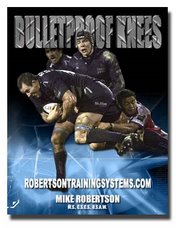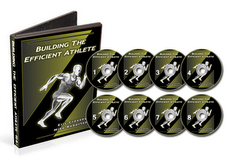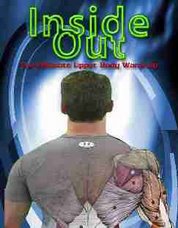Well I just had a pretty darn good post lined up, only to have it squashed by Blogger for some unknown reason. I'll do my best to re-hash it.
In case you missed the article yesterday at T-Nation, I've had a flood of e-mails to discuss my thoughts. The primary concern was that a few of the exercises that were written off were in Eric and I's M2 DVD, so let's cover the exercises one by one.
However, before I get into that, let me say this - I've met Nick before and he's a very bright guy. I agree with almost everything he said in the article. For the sake of learning, though, let's cover all the movements. I'll even put a little * by it if it was covered in the M2 DVD.
#1 - The Scorpion Twist*
Since Eric and I released M2 in December of 2005, there are a few things we've changed with our training philosophies. One of those things is a real focus on mobilizing the hips and thoracic spine, while working to stabilize the lumbar spine.
The scorpion twist, when done correctly, is effective at lengthening the hip flexors and activating the gluteals. The problem is, however, most people don't perform the movement correctly. Rather than moving via the hips, they move through the path of least resistance, which for them is the lumbar spine. This is a big no-no.
Quite simply, if you can't do it correctly or don't have a coach, don't include it.
#2 - Prone Alternating Supermans
I've never been a big fan of this exercise. For most it increases mobility around the lumbar spine, while totally negating activation of the gluteals. Agreed 100% with its removal.
#3 - Hip Crossover*
This is another exercise that I don't use as frequently, simply because it focuses on lumbar spine mobility vs. hip mobility.
If someone has nerve based issues I prefer the Yoga Twist or Cat/Camel exericses. Remember, these are't mobility drills as much as NEURAL FLOSSING exercises.
#4 - Iron Cross*
Much like the prone scorpion, with this exercise the devil is in the details. If you don't have a coach or trainer to cue you properly, use a different exercise that also focuses on lengthening the lateral hip structure such as S-S leg swings.
#5 - Hip Cradle*
This is really the only exercise that I don't agree with. I think there are just too many leaps in the logic.
With a mobility drill (as we outline in M2) the goal is to acutely alter the stiffness of the muscle to prepare yourself for training. However, this position is then compared to the cross-legged position that many people assume while sitting. The problem is, there's a fundamental difference here. In a mobility drill, you move in and out of the ROM rather quickly. In a long duration static stretch (like sitting in the cross-legged position), you're obviously holding for an extended period of time. Therefore, the tissues repond differently.
In a mobiltiy drill, the goal is to alter stiffness to prepare yourself for quality movements in trainig. With long duration static stretching, the goal is to actually add sarcomeres and increase the length of the tissue. So to say that doing this exercise as a mobility drill is the same as holding this position for an extended period of time is quite a leap of logic.
In my experience, this exercise when used as a mobility drill is not going to lead to an increased risk of hip impingement or instability. If you sit in this position for extended periods of time, then yes, this may be an issue. But as a mobility drill, I don't think there's any need to remove it from your programming unless it's painful or not giving you the intended benefits.
Okay, this is getting quite lengthy so I'll wrap it up. Just remember that there are very few BAD exercises. Rather, what's more important is your technical execution of said exercises, and how they relate to your overall programming and goals. I hope this helps!
Stay strong
MR
High Octane Corrective Exercise and Performance Enhancement | www.RobertsonTrainingSystems.com
Wednesday, April 16, 2008
Response to yesterday's T-Nation article
Labels:
Eric Cressey,
Magnificent Mobility,
Mike Robertson,
T-Nation
Subscribe to:
Post Comments (Atom)









No comments:
Post a Comment